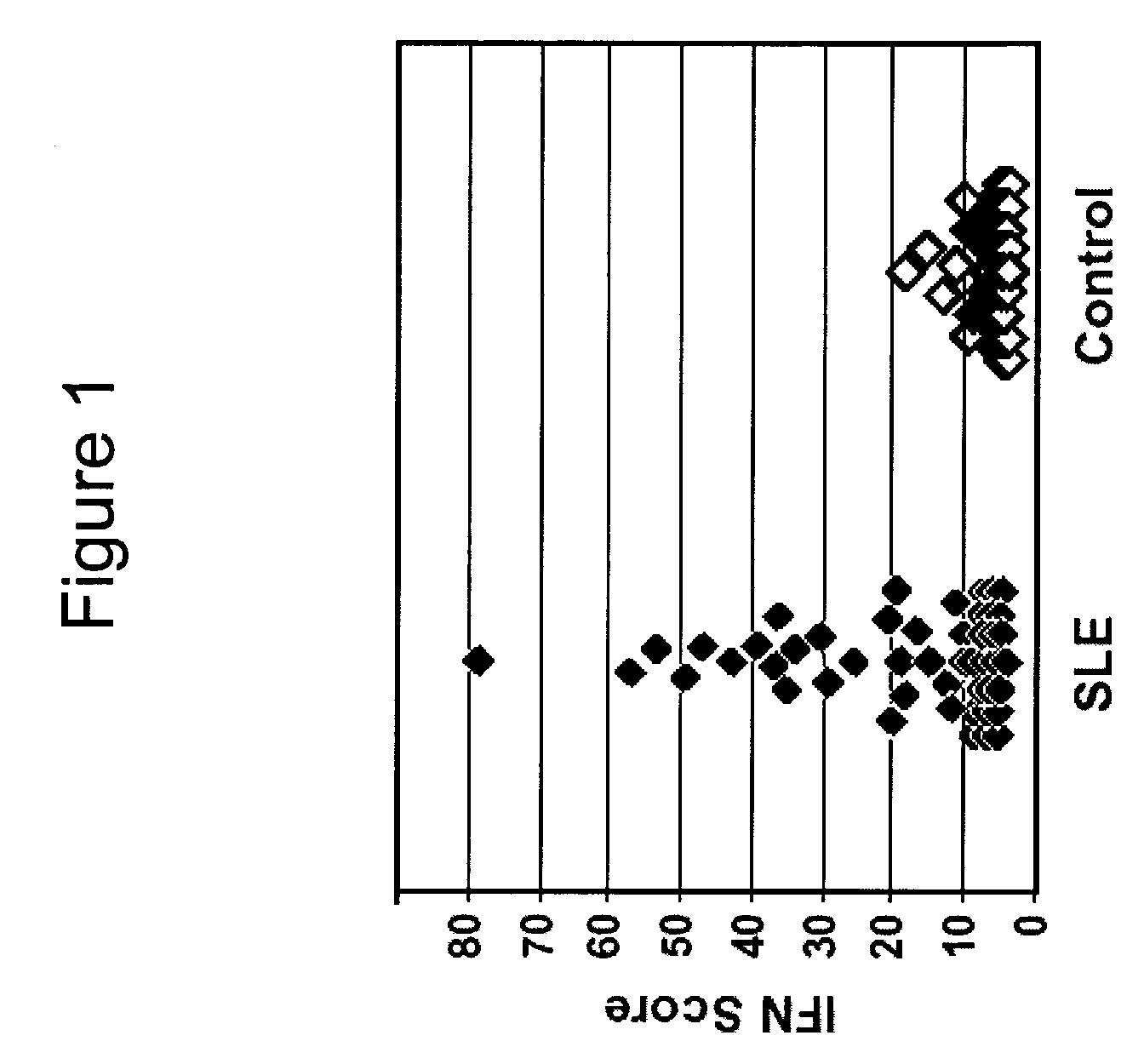Methods for diagnosing severe systemic lupus erythematosus
a systemic lupus and erythematosus technology, applied in the direction of drugs, instruments, immunological disorders, etc., can solve the problems of difficult diagnosis and management of lupus, achieve the effect of improving the health and quality of life of the patient, reducing or relieving sle symptoms, and improving the patient's symptoms
- Summary
- Abstract
- Description
- Claims
- Application Information
AI Technical Summary
Benefits of technology
Problems solved by technology
Method used
Image
Examples
example 1
Identifying Genes that Can be Used to Diagnose SLE
[0044]PBMCs were collected from 48 SLE patients and 42 healthy, age- and gender-matched control individuals. All patients had physician-verified SLE and met at least four of the eleven ACR criteria for lupus. The average age of SLE patients was 45±11 years, and the average age of controls was 34±13 years. Each PBMC sample contained monocytes / macrophages, B and T lymphocytes, and natural killer cells.
[0045]For the first 11 patients and 11 controls, poly A+ mRNA was extracted from the collected PBMC samples. Briefly, 60 mL of peripheral blood was drawn into a heparinized syringe. Whole blood was layered over an equal volume of Histopaque and centrifuged at 400×g for 30 minutes at 25° C. Plasma was harvested and stored at −80° C. PBMCs were harvested and washed twice in 1×PBS, and the mRNA was isolated using a FastTrack mRNA isolation kit (Invitrogen, Carlsbad, Calif.).
[0046]For the next 37 patients and 31 controls, total RNA was extrac...
PUM
| Property | Measurement | Unit |
|---|---|---|
| clinical heterogeneity | aaaaa | aaaaa |
| northern blotting | aaaaa | aaaaa |
| width | aaaaa | aaaaa |
Abstract
Description
Claims
Application Information
 Login to View More
Login to View More - R&D
- Intellectual Property
- Life Sciences
- Materials
- Tech Scout
- Unparalleled Data Quality
- Higher Quality Content
- 60% Fewer Hallucinations
Browse by: Latest US Patents, China's latest patents, Technical Efficacy Thesaurus, Application Domain, Technology Topic, Popular Technical Reports.
© 2025 PatSnap. All rights reserved.Legal|Privacy policy|Modern Slavery Act Transparency Statement|Sitemap|About US| Contact US: help@patsnap.com



